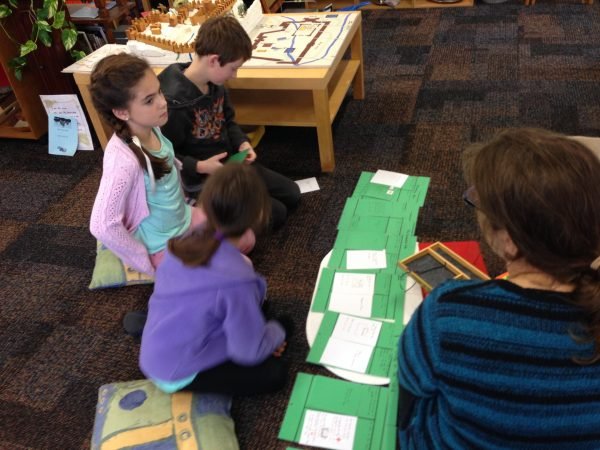An Overview
The Catechesis of the Good Shepherd is an approach to the religious formation of children.

It is rooted in the Bible, the Liturgy of the Church and the educational principles of Maria Montessori.
Children gather in an atrium, a room prepared for them, which contains simple yet beautiful materials they can use to help answer interior questions like:
“God who are you? How do you love us?”
About the Environment
“Like the environment of the Church, it is a place where the child can listen to the proclamation of the Good News, meditate on it and begin to live it according to the child’s own rhythm.
Different from the environment of the Church, the atrium is not only a place for announcement and celebration: it is also a place for work.
It is a particular environment in which work easily becomes meditation and prayer.”

Gianna Gobbi, 2000. (Listening to God with Children)
How can the atrium nourish a child’s faith development?
The Catechesis of the Good Shepherd is not so much a curriculum as an environment. Through the use of the materials in the environment the children are introduced to God.
The purpose of the Catechesis isn’t to teach children about God through information about scripture or liturgy. Rather the focus is on introducing children to an experience of God through scripture and liturgy.

The atrium is a special place for children. It is a place of prayer and meditation, not a classroom for instruction. It is holy ground where Christ is encountered through word and action. It is a place of worship and community—religious life.
Every work in the atrium is either a passage to prayer or prayer itself.
The Materials
The materials used in the atrium have been designed to meet the vital needs of each age group of the children. This is based on their capabilities according to the research of Maria Montessori.
They are in a size that will comfortably fit the child and sensorially appealing; made of natural materials (such as wood, metal and clay) and as much as possible are hand made by the catechists themselves.

The room is set out in a way that conveys the centrality of the parable for each age group; the Good Shepherd for ages 3-6 and the True Vine for ages 6-12. Arranged around these are the Eucharist, the sacraments, scripture and geography works.
The 3-6 Child
The 3-6 year old child is particularly capable of receiving and enjoying the most essential elements of our faith: the announcement of God’s love in the person of the Good Shepherd who died and is risen.

Materials they work with help make the mystery of God concrete. For example, a geography work of a 3D relief map of the land of Israel, establishes Jesus as a real person in time and space.

Their sense of wonder and delight are nurtured through selected parables on the mystery of God’s kingdom: they may wonder at how something as small as a mustard seed can grow into a large tree.
Their desire for knowing the names of things and ordering things in their environment is met in work such as the altar where they learn the names and lay out items as they are arranged at Mass.
The 6-12 Child
The parable of the True Vine is the central meditation for children in this age group.
The work here responds to the need of the older child to know their place in their relationship with God, family and the wider community.

A range of moral parables provides the opportunity for meditation on God’s love and enduring forgiveness.
Their love for detail is ministered to through breaking open different parts of the Mass and exploring it, deepening their knowledge and love of the Eucharist.
Timelines focusing on salvation history from Creation to Redemption to Parousia nurture their vivid imagination and their fascination with time; the past and the future. This leads to the wonder of all the many gifts we have received from God, culminating in God’s gift of his own life through Jesus.

There is an emphasis on our response to God’s amazing generosity and the responsibility that comes with receiving these gifts.